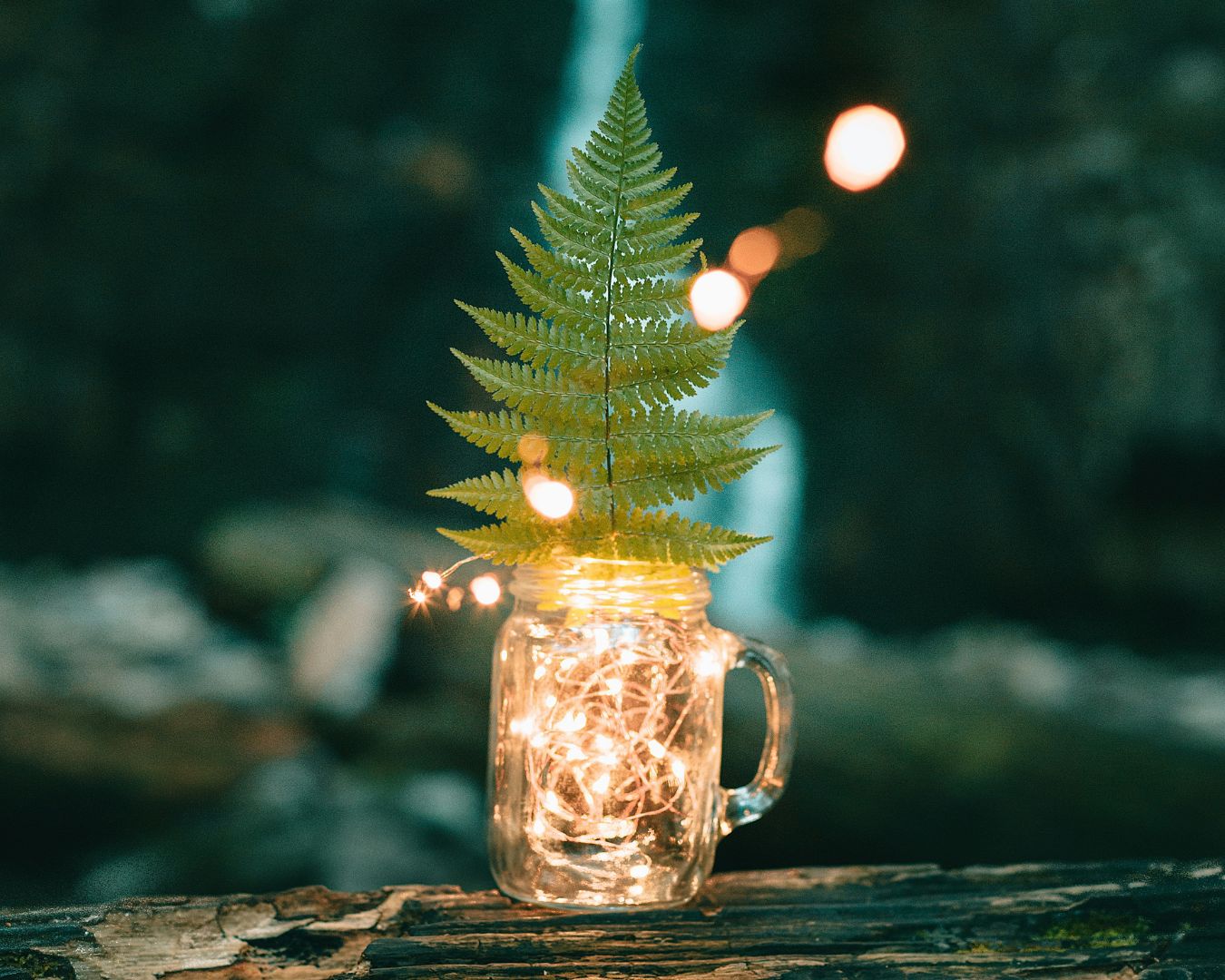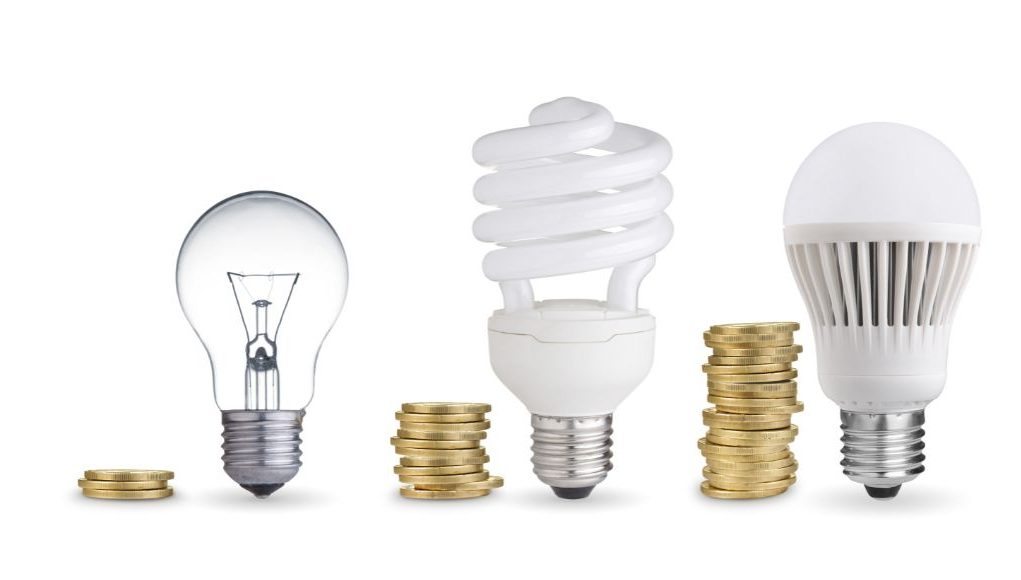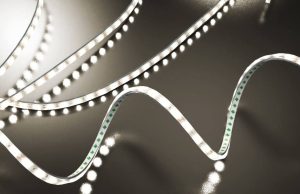You know how, when technology advances, everything becomes smaller? Think computers and phones. Early computers were as large as a room. Now, even your smartphone is faster than computers from way back when. But we’re not here to talk about that. We’re talking lights. And what’s crazy is that the light industry experienced something similar to this “shrinking” phenomenon!
We’re talking about LEDs, of course. They’re tiny marvels that have reshaped the way we think about artificial lighting. They’re small nodes that do BIG science to give us light that’s brighter—and cheaper—than their predecessors.
In this post, we’re going to shed light (totally a pun) on LED energy savings, why LEDs are the best lights, and why we should never look back, only forward.
The Efficiency of LED Technology
If there’s one quality all kinds of lighting have shared in the past, it’s that they’re wasteful of both materials and energy. (Oh, and they’re hot, literally.) Then LEDs came along, and the lighting industry has never been the same.
At the heart of the LED revolution is one simple truth: LEDs use significantly less power to produce the same amount of light as traditional lighting technologies. This isn’t even just marketing fluff — there’s a whole science that backs this up.
So let’s get a little sciency for a bit. I promise it won’t be boring.
Do you know how an incandescent bulb produces light? By heating a filament inside the vacuum-sealed glass. The filament, in turn, produces light as the heat intensifies. What that means is that 90–95% of the energy (electricity) is turned into heat rather than light.
This is important to note since LEDs, on the other hand, are incredibly efficient, converting up to 80–90% of the electricity into visible light. That means less energy is used for the same brightness, and your electricity meter doesn’t spin like it’s in the finals of Strictly Come Dancing.
Here’s how it works (the sciency bit without the nerdy jargon):
LEDs use a semiconductor where, when an electrical current passes through it, it turns the electricity directly into light. No burning filaments, no warm-up time, no wasted energy trying to imitate the sun.
Picture this:
- A standard 60W incandescent bulb emits around 800 lumens.
- An LED bulb producing 800 lumens uses only about 8 to 10 watts.
That’s a night-and-day difference. Energy saved? About 80-85% simply by making the switch to LED.
LED vs Incandescent vs Fluorescent
We might sound a little biased here (just kidding, we’re very biased), but let’s make the numbers do the talking.
How much energy do LEDs save? Let’s line them up and see who really deserves your socket space:
And the winner is… LED! And by a landslide, too! It lasts longer, sips electricity like it’s on a diet, and doesn’t need constant replacement. Plus, it doesn’t contain any mercury like fluorescent bulbs. You could say it’s the light giant of lighting: small, efficient, and fighting for a better future. And it’s winning.
Energy Savings in the Real World
Not Just for Eco-Warriors
LEDs aren’t just energy nerds’ favourite gadget. They’re transforming real spaces and real bills.
Homes:
A typical UK household uses about 11% of its electricity on lighting. So spending time to switch to LED lighting could save you money in the long run. It’s even projected that switching one 100-watt incandescent light to an LED bulb could save you about £15 per bulb per year. Do the math for changing 20 bulbs, and you’ll start to see the savings potential.
Businesses:
Some commercial settings have extensive lighting systems that run for 12+ hours a day. So, switching to LED lights offers significant returns, with energy reductions of up to 70%.
Since these establishments typically use a lot of light to keep their space bright and inviting for customers, switching out their lights to LED means significantly lowering their carbon footprint.
Also, a lower electricity bill means more profit. Win-win for the business and the environment.
City Streets:
Sure, incandescent street lights look nostalgic and feel like they’re straight out of a romance movie. But they eat up too much energy and don’t really offer bright lighting—well, not as much when you compare them with LED lamps. Imagine the amount of annual savings major cities enjoy after switching to LED street lights. Millions.
Plus, better-lit streets, which are safer—nothing romantic if you’re getting mugged in a poorly-lit alley.
Discover more sustainability tips and ideas in Lighting and Sustainability: A Greener Future.

Long-Term Environmental Benefits
Sure, saving money is great. (Who doesn’t want that?) But our wallets and bank accounts aren’t the only ones enjoying the benefits of reducing energy consumption. You know who else loves this switch to LED lights? Mother Nature.
That’s right. Reduced energy consumption means reduced carbon footprint. Bet that doesn’t show up in your electricity bill, does it?
Let’s break it down:
1. Less Energy Means Less Carbon
The UK still generates a significant chunk of electricity from fossil fuels. So every watt you don’t use translates into less carbon dioxide being pumped into the air. LEDs reduce greenhouse gas emissions simply by doing their job more efficiently. This means that by merely switching to LED lights, you already contribute to saving the planet. Cheers, you planet saver!
2. Longer Life = Less Waste
A single LED can last 25,000 to 50,000 hours — that’s years of light. Fewer replacements mean fewer bulbs heading to landfill and fewer manufacturing resources used over time.
3. No Nasty Chemicals
Unlike compact fluorescents (CFLs), LEDs contain no mercury — a toxic material that requires special handling and disposal. You don’t need a hazmat suit if one breaks. Just a vacuum and a bit of dignity. Still, make sure to put them in the correct garbage bin. Proper disposal is still a thing, after all.
4. Lower Heat Emissions
LEDs don’t heat up and are even cool to the touch. So, in warm months, they don’t fight your air conditioning like older bulbs do. That’s a double win for energy efficiency, especially in office spaces and retail.
Choosing the Right LED Products
We say this time and again, but not all LEDs are made equal. Before you bulk-buy the first bag of bargain LEDs from the supermarket, take a moment. The right LED can transform your space, but the wrong one can leave it looking like a dentist’s waiting room—bright yet stale.
So here’s a little checklist to, well, check when you’re out shopping for the perfect LED lights for you:
Lumens, Not Watts
Watching out for watts is the old school thinking. Forget it. With LEDs, lumens tell you how bright the bulb is. There’s a whole math behind how many total lumens you need for a single room (depending on the area), but here are the general guidelines:
- 1500 – 3000 lumens: General lighting for living rooms, dining rooms, and bedrooms
- 3000 – 4000 lumens: General lighting for kitchens
- 3000 – 4000 lumens: General lighting for office
- 400 – 800 lumens: General lighting for bathroom
- 500 – 800 lumens for task lighting
- 400 – 600 lumens for accent lighting
Colour Temperature
Always ask yourself: Do you want warm and cosy or bright and clinical? Get the correct colour temperatures for the kind of lighting you need in a space. These are measured in Kelvin (K).
- 2700K – 3000K: Soft warm white, perfect for bedrooms and lounges. Relaxing and inviting.
- 4000K: Neutral white, great for kitchens and bathrooms. Good for task lighting.
- 5000K – 6500K: Cool daylight, ideal for garages and workshops.
Dimmability
No. Not all LEDs are dimmable. So, always make sure to check the label and product description before checking out. Always pair dimmable lights with a compatible dimmer switch, or else you’ll be stuck with lights that flicker. Maybe haunted houses just have incompatible light bulbs? Who knows? Definitely something worth looking into.
Quality Over Quantity
Sure, compared to traditional lights, the upfront cost of switching to LED might be shocking. But getting cheap LEDs is not a good practice. They often cut corners on build, flicker rate, and lifespan.
Make sure to only get your lights from reputable LED light suppliers like Simple Lighting, which has over a decade of experience helping clients get the high-quality LED lighting they deserve.
Final Thoughts
With LED lights, you get the same (or better) quality of light while using a fraction of the energy, generating less heat, and doing your part for the planet. LED lights are one of the rare things where everyone is a winner: you save money, and the world gets a smaller carbon footprint. That’s like hitting two birds with one stone.
So next time you flick a switch, ask yourself: Is this bulb really earning its keep? If it’s not an LED, probably not.















